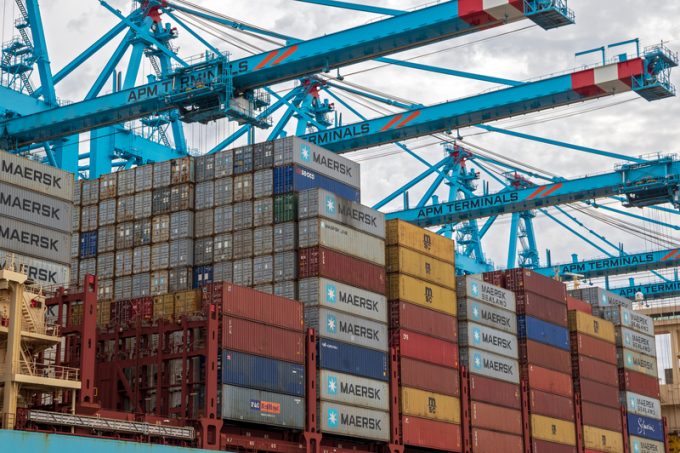Two killed after Houthi attacks resume on merchant ships
Insurance premiums look set to spike for the few carriers braving Red Sea transits, after ...

There are calls for an urgent review of container lashing practices and stack height restrictions after another box ship lost a huge number of containers in the Pacific Ocean.
The 13,092 teu Maersk Essen, en route from China to Los Angeles, lost approximately 750 containers on ...

Comment on this article
JOHN ANTHONY JAMES BROOKS
January 21, 2021 at 7:21 pmSirs, These Maritime incidents simply highlight again the environmental challenges facing the world, the damage caused by pollution is severe and unwanted under any circumstances. It’s a great pity but all nations need to become more self sufficient and not rely on cheaper manufacturing processes of the far east and China in particular. those of us in the west who have benefited must consider perhaps that Ex President Trumps policy of bringing jobs home to the rust belt was in fact a wise policy and is something all nations must consider if we are to survive on this planet earth – we must all produce locally and buy
locally. As a ex Mariner it hurts to say this but we must face facts or we and our grandchildren will face the consequences.
Brooks
QuaiOui
January 22, 2021 at 7:43 pmFor sure the parametric rolling imparts high loads.
To date no one has mentioned quality of the lashing gear. That should be fully investigated. There is a very good chance it will be the root cause. Know the provenance of this equipment…..
Know that the dynamics are known and the lashing systems designed accordingly. The design also includes are LARGE margin.
Because it is the ships responsibility one would conclude that the fitting of the lashings would all be checked dyring stow and before sailing. But, these people have to accept that the lashings, part of ships equipment, are fit for purpose. Just because they look right does not mean they are.
So let’s see some fully independent research done into the quality of container lashing materials manufacture and testing, before setting out at a tangent, that treats not the root cause, but rather the guessed cause.
The writer is a degree qualified ex marine engine, with a great deal of experience in ship design and build, including containerships.
ANTONIO GARCIA
January 23, 2021 at 6:32 pmSince the CARGO SECURING MANUAL was implemented 20 years ago, everybody knows how to stow each piece of cargo onboard, but ship Master and crew are the only responsible persons.
It is the time of puting designers, port operators, charter operators, in front of their responsibilities under the laws, and improve their qualifications to not compromise safety of life, ships and cargoes.
I agree. Mohd Azmi Bin Ahmad
January 23, 2021 at 1:02 amTaking the easy way makes your own nationals seek foreign shores for better opportunities.
Tommy
January 24, 2021 at 9:10 amAre these ULCV fitted with any kind of anti-rolling devices, flume tanks or stabilisers?
Lasherman
January 29, 2021 at 5:53 amThey always want to look into the ‘lashing practices’ and lashing gear. Here’s a spoiler; it’s the same gear and practices that have been standard on container vessels for decades without (major) issue. What’s changed? Easy: carriers are pushing bigger stacks and, probably, ballsier routes in order to squeeze the most out of record high rates and low fuel costs.